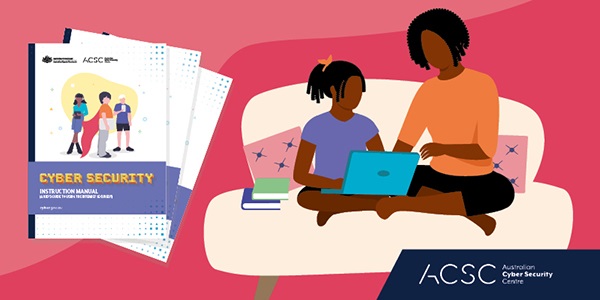ACSC’s Act Now Stay Secure Campaign – Cyber Security for Kids
The following information and links provided by the ACSC (Australian Cyber Security Centre) are timely especially for those with children – but also handy for general cyber security knowledge for all ages.
Don’t hesitate to contact TNR if you have any queries.
Dear ACSC Home Partners,
With school holidays well underway, kids are spending more time online gaming, talking with friends and posting on social media.
It is an excellent time for parents and carers to teach or remind their children of cyber security behaviours. Remind them to take a moment and check if they know the person they are engaging with online and if they don’t, they should ask for guidance.
Today, the ACSC released the Kids Cyber Security Checklist for parents and carers. It helps them teach their primary school-aged children the basic cyber security steps to stay secure online.
Calling parents and carers:
The internet has enabled kids to learn, share and create more easily. But it has also become a space for cybercriminals to cause trouble and steal information from others. It’s vital to instil cyber secure behaviours early, so children learn how to identify cyber threats and mitigate against them.
The ACSC’s Kids Cyber Security Checklist provides simple tips for primary school-aged children about the basic cyber security steps to stay secure online.
The ACSC’s Kids Cyber Security Checklist is available at: https://www.cyber.gov.au/cyber-security-kids.
Use the ACSC’s learning resources:
Help create a more secure online environment for children by sharing our easy-to-follow guides, including:
• Kid’s Cyber Security Checklist
• Cyber Security Instruction Manual: A Kid’s Guide to Using the Internet Securely
• Cyber Security Poster for Kids
• Cyber Security colouring in sheet for Kids
What can you do?
The ACSC is encouraging Australian families to strengthen their children’s cyber security online by taking the following steps:
• Turn on automatic security updates on all devices to fix weaknesses.
• Activate multi-factor authentication to add multiple layers of protection.
• Regularly back up devices to help easily restore your files in the case your device is ever hacked, lost, stolen or damaged.
• Use strong passphrases to secure gaming, social media and all other accounts.
• Check settings and set portable devices to require parental approval before software is installed. Parental controls can also be used for this purpose.
• Report and recognise scams.
Get Social:
Be sure to follow us on Twitter, LinkedIn and Facebook to share the latest Cyber Security for Kid’s posts across your social media channels and help keep Australians secure online.
Report
If you or your child receive an unusual email or message, report it. Go to Scamwatch and visit the ACSC’s ReportCyber. The faster you report the scam, the quicker you can act.
Act now to stay secure.
Kind regards,
ACSC
Are you a victim of cybercrime? Visit ReportCyber to take your next steps.
We use hyperlinks to give you more information. If you don’t want to click hyperlinks, you can search for the information on the ACSC website.
CONTACT US
Facebook: https://www.facebook.com/cybergovau
Twitter: https://www.twitter.com/CyberGovAU
LinkedIn: https://au.linkedin.com/company/australian-cyber-security-centre
Web: https://www.cyber.gov.au
Important: The information contained in this post / article is not advice. Readers should not act solely on the basis of material contained in this post. Items herein are general comments only and do not constitute or convey advice per se. We recommend that our formal advice be sought before acting on anything contained in this post.

